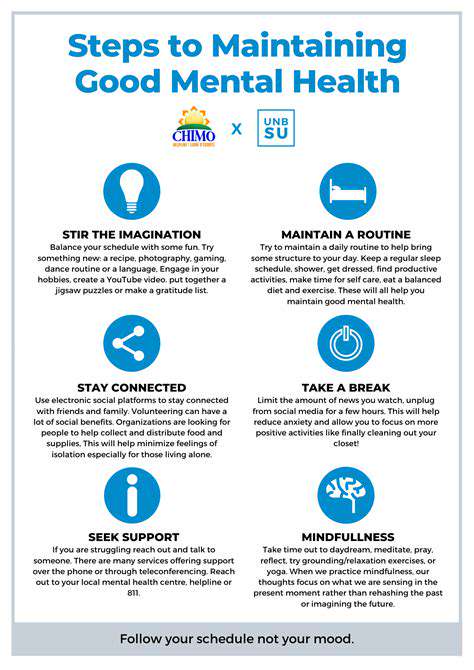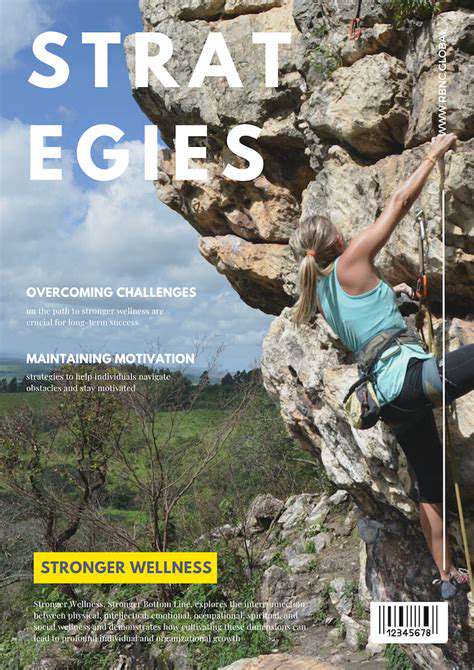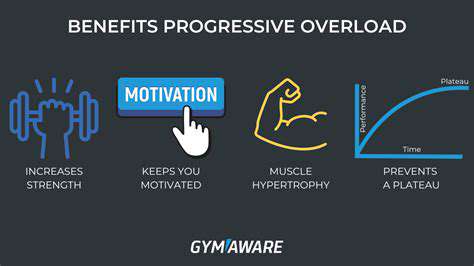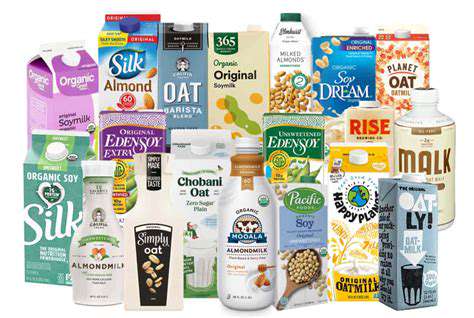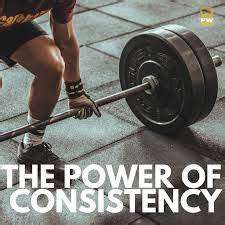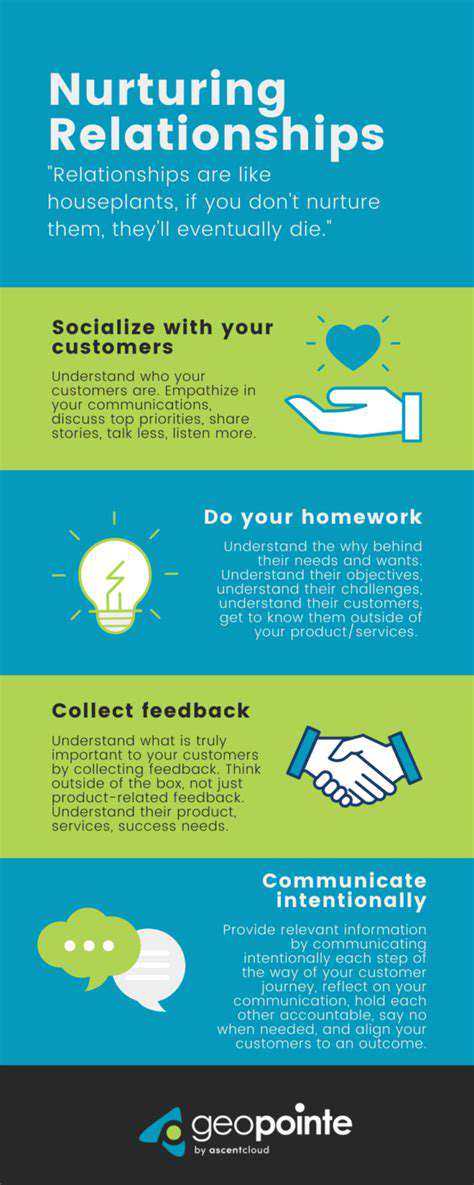How to Use Visualization for Goal Setting in Health
Understanding the Importance of Defining Goals
Defining clear and specific health goals is the cornerstone of any successful visualization strategy. It's not enough to simply wish for better health; you need to articulate precisely what that means for you. Are you aiming for improved cardiovascular health, weight loss, increased energy levels, or something else entirely? Clearly outlining these goals helps to focus your visualization efforts and provides a tangible target to strive towards. This initial step of definition is crucial for aligning your mental imagery with a concrete outcome.
Without well-defined goals, visualization can feel aimless and ineffective. It's like trying to hit a target with your eyes closed – you might get lucky, but you're much more likely to miss. By articulating your specific health aspirations, you provide your visualization practice with a roadmap, ensuring your mental journeys are directed towards achieving your desired results. This focused approach significantly increases the chances of success.
Setting Realistic and Measurable Goals
While it's important to dream big, it's equally crucial to set realistic and measurable goals. Goals that are too ambitious can lead to frustration and discouragement, hindering your motivation. Instead, focus on establishing goals that are attainable within a reasonable timeframe, considering your current health status and lifestyle. For example, aiming to lose 10 pounds in a month might be unrealistic, while aiming for a gradual loss of 1-2 pounds per week is a more attainable and sustainable goal.
Measurable goals are essential for tracking your progress and maintaining motivation. How will you know if you're making progress? If you can't quantify your progress, you won't be able to accurately assess whether your visualization efforts are working. Using a combination of metrics, such as weight, measurements, or energy levels, will provide a clear picture of your success.
Considering Your Current Health Status
Before you begin visualizing, it's vital to acknowledge your current health status. Understanding your baseline allows you to tailor your visualization practice to address specific needs and limitations. If you have pre-existing conditions, consulting with your healthcare provider is crucial to ensure your visualization efforts complement, rather than contradict, your treatment plan. Understanding any physical limitations or restrictions is equally important for setting realistic expectations and designing visualization exercises accordingly. For instance, if you have joint pain, visualization exercises should focus on pain relief and mobility improvement, rather than demanding extreme physical feats.
Creating a Visual Representation of Your Goals
Visualizing your health goals effectively involves creating a tangible representation of your aspirations. This could be a vision board, a journal, or even a digital document. Include images, quotes, or affirmations that resonate with your desired outcome. This visual representation acts as a constant reminder of your goals, keeping you motivated and focused on your desired health trajectory. Visualizing your success through tangible representations can significantly enhance your motivation and provide a constant source of inspiration throughout your journey.
By creating a visual representation, you're actively engaging multiple senses. The visual imagery, combined with any associated words or feelings, strengthens the connection between your mind and your desired outcome. This multi-sensory approach helps solidify your commitment and reinforces the mental image of your future self, embodying the desired health state.
Tracking Progress and Adapting Your Visualization
Regularly tracking your progress is essential for maintaining motivation and ensuring your visualization efforts remain aligned with your goals. Use a journal to record your daily experiences, noting any improvements, challenges, or insights gained. This process allows you to identify patterns and adjust your visualization techniques as needed. If you find that a specific visualization exercise isn't yielding the desired results, don't hesitate to modify or replace it with something more effective. Adaptability is key to success in any visualization journey.
Tracking your progress also allows you to celebrate your achievements. Recognizing milestones, no matter how small, reinforces positive behavior and keeps your motivation high. This process of self-reflection and adaptation is crucial for achieving long-term results and ensuring that your visualization practice remains a powerful tool in your health journey.
Cultivating a Positive Mindset: Fueling Your Visualization

Cultivating a Growth Mindset
A growth mindset is crucial for personal development and success. It involves embracing challenges as opportunities to learn and grow, rather than viewing setbacks as failures. This proactive approach allows individuals to adapt and overcome obstacles more effectively, fostering resilience and a deeper understanding of themselves. Cultivating a growth mindset encourages continuous learning and improvement, which is vital in today's dynamic world.
Individuals with a growth mindset are more likely to persevere through difficulties, because they understand that setbacks are a natural part of the learning process. This perspective allows them to view challenges as opportunities for growth and to approach them with a positive and proactive attitude.
Identifying Negative Thought Patterns
Recognizing negative thought patterns is the first step towards cultivating a positive mindset. These patterns, such as catastrophizing or self-criticism, can significantly impact our emotional well-being and hinder our progress. Identifying these thought patterns allows us to challenge their validity and replace them with more constructive and realistic ones.
Understanding how our thoughts influence our emotions and actions is essential. By becoming aware of negative thought patterns, we can begin to address and modify them, ultimately leading to a more positive and productive outlook on life.
Practicing Self-Compassion
Self-compassion involves treating ourselves with the same kindness and understanding that we would offer a friend facing a similar challenge. It acknowledges that imperfections and mistakes are part of the human experience, and that it's okay to experience setbacks and difficulties without being overly critical of ourselves.
By practicing self-compassion, we can create a more supportive and nurturing inner environment, which fosters resilience and allows us to navigate life's challenges with greater ease and grace. This self-compassionate approach allows us to develop a stronger sense of self-worth and acceptance.
The Power of Positive Affirmations
Positive affirmations are statements that reinforce positive beliefs and values. Regularly repeating these affirmations can help reprogram our subconscious mind, promoting a more positive and optimistic outlook.
By focusing on our strengths and positive qualities, affirmations can boost self-esteem and confidence, empowering us to approach life's challenges with greater resilience and determination. Affirmations also help shift our focus from negativity to positivity, creating a more positive internal dialogue.
Developing Healthy Coping Mechanisms
Developing healthy coping mechanisms is essential for managing stress and negative emotions effectively. This includes practices such as mindfulness, meditation, exercise, and spending time in nature. These activities can help regulate our emotional responses and promote a sense of calm and well-being.
Identifying and implementing healthy coping mechanisms is crucial for maintaining a positive mindset in the face of adversity. These mechanisms help us to navigate stressful situations with greater ease and composure, thereby reducing the impact of negative emotions on our overall well-being.
Surrounding Yourself with Positivity
Surrounding yourself with positive influences, whether through relationships, hobbies, or environments, is crucial for cultivating a positive mindset. Positive interactions and supportive relationships can significantly impact our emotional well-being and overall outlook on life.
By consciously choosing to spend time with uplifting individuals and engaging in activities that bring joy and fulfillment, we create a supportive environment that fosters a positive mindset and promotes personal growth. This conscious effort to surround yourself with positivity significantly contributes to a healthier and more fulfilling life.
Integrating Visualization into Your Routine: Making It Stick

Integrating Data Visualization into Your Workflow
Data visualization is a crucial component of any modern analytical workflow. By transforming raw data into easily digestible visuals, you unlock a powerful ability to identify trends, patterns, and outliers that might otherwise remain hidden. This process significantly enhances the understanding and interpretation of complex information, enabling better decision-making and strategic planning. It's not just about creating pretty pictures; it's about using visuals to communicate insights effectively and drive action.
Effective visualization goes beyond simply plotting data points. It requires a deep understanding of the data itself, as well as the intended audience. Choosing the right chart type, incorporating appropriate labels and annotations, and ensuring clarity and conciseness are critical elements of successful visualization. This process often involves iterative refinement, allowing you to adjust your approach based on the insights gleaned from each visualization.
Choosing the Right Visualization Techniques
Selecting the appropriate visualization technique is paramount to effective communication. Bar charts excel at comparing categorical data, while line graphs are ideal for illustrating trends over time. Scatter plots highlight correlations between variables, and histograms provide a visual representation of data distribution. Choosing the correct visualization helps to emphasize the key message and ensures that the audience understands the information being presented.
Consider the nature of your data and the insights you wish to convey when selecting a visualization technique. Are you trying to show comparisons, trends, distributions, or correlations? Understanding the answers to these questions will guide you towards the most suitable visualization method. This careful selection ultimately contributes to a more impactful and insightful presentation of your findings.
Tools and Technologies for Visualization
A variety of tools and technologies are available to facilitate the creation of effective data visualizations. Software packages like Tableau, Power BI, and Python libraries like Matplotlib and Seaborn offer powerful capabilities for data manipulation, analysis, and visualization. These tools often provide intuitive interfaces and a wide range of chart types, making the process more accessible and efficient.
Beyond dedicated software, web-based platforms and online resources can also be valuable. These resources often provide interactive dashboards and visualizations, enabling users to explore data in dynamic and engaging ways. Learning how to use these tools effectively is a valuable skill, enabling greater efficiency in your workflow and allowing for rapid generation of visualizations.
Improving Data Communication Through Visualization
Visualization enhances data communication by making complex information more accessible and understandable. By presenting data in a visual format, you can effectively convey insights to a wider audience, regardless of their technical background. This visual approach often fosters a deeper understanding and engagement with the information, leading to more effective decision-making. The ability to quickly and clearly communicate data insights is critical in today's fast-paced world.
Visualizations can be used in various contexts, from presentations and reports to dashboards and interactive web applications. By thoughtfully selecting and designing visualizations, you can effectively communicate your findings and drive action. This process ultimately strengthens your ability to influence stakeholders and achieve desired outcomes.
Read more about How to Use Visualization for Goal Setting in Health
Hot Recommendations
-
*Guide to Managing Gout Through Diet
-
*Best Habits for Financial Well being
-
*How to Build a Routine for Better Mental Health
-
*How to Eat Healthy on a Budget [Tips & Meal Ideas]
-
*Guide to Practicing Self Acceptance
-
*How to Incorporate More Movement Into Your Day
-
*Guide to Managing Chronic Pain Naturally
-
*Guide to Building a Reading Habit for Well being
-
*Top 5 Weight Loss Supplements That Actually Work
-
*Best Exercises for Postpartum Recovery [Beyond Abdominal Work]

